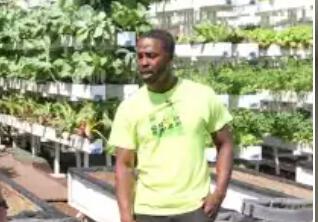
Breaking News
 James O'Keefe: My entire speech at AmericaFest 2025. We're not stopping. Join us to expose..
James O'Keefe: My entire speech at AmericaFest 2025. We're not stopping. Join us to expose..
 U.S. vs. Chinese Military Comparison – Focus on Asia-Taiwan Scenario
U.S. vs. Chinese Military Comparison – Focus on Asia-Taiwan Scenario
 DoJ Sues Four More States for Failing To Produce Voter-roll Data
DoJ Sues Four More States for Failing To Produce Voter-roll Data
 World's Largest Aviation Giant Abandons Google Over Security Concerns
World's Largest Aviation Giant Abandons Google Over Security Concerns
Top Tech News
 Perfect Aircrete, Kitchen Ingredients.
Perfect Aircrete, Kitchen Ingredients.
 Futuristic pixel-raising display lets you feel what's onscreen
Futuristic pixel-raising display lets you feel what's onscreen
 Cutting-Edge Facility Generates Pure Water and Hydrogen Fuel from Seawater for Mere Pennies
Cutting-Edge Facility Generates Pure Water and Hydrogen Fuel from Seawater for Mere Pennies
 This tiny dev board is packed with features for ambitious makers
This tiny dev board is packed with features for ambitious makers
 Scientists Discover Gel to Regrow Tooth Enamel
Scientists Discover Gel to Regrow Tooth Enamel
 Vitamin C and Dandelion Root Killing Cancer Cells -- as Former CDC Director Calls for COVID-19...
Vitamin C and Dandelion Root Killing Cancer Cells -- as Former CDC Director Calls for COVID-19...
 Galactic Brain: US firm plans space-based data centers, power grid to challenge China
Galactic Brain: US firm plans space-based data centers, power grid to challenge China
 A microbial cleanup for glyphosate just earned a patent. Here's why that matters
A microbial cleanup for glyphosate just earned a patent. Here's why that matters
 Japan Breaks Internet Speed Record with 5 Million Times Faster Data Transfer
Japan Breaks Internet Speed Record with 5 Million Times Faster Data Transfer
How a 1/10 Acre Microfarm Feeds 35 Families All Year Long in Los Angeles

Their terraponic system uses collected and then recycled rainwater to grow nutrient-dense food with minimal water. Terraponics uses 20% soil to 80% water and floods from the bottom of the planter and then water drains back to a reservoir. Crops may be planted closer together because they are not competing for nutrients. Crop Swap LA distributes the fresh produce in their community. It also encourages people to grow food on unused front or back yards.
Crop Swap LA began in 2018 as a way to unite Los Angeles gardeners to grow and share their extra veggies, fruits and herbs. The institution's mission has evolved to transforming lawns and unused spaces into microfarms that utilize irrigation systems with harvested rainwater.
Transportation time for produce to reach a traditional market can range from a few days to a few weeks, during which time the produce loses much of its nutritional value. Vitamin C losses, even when produce is refrigerated "..for 7 days range from 15% for green peas to 77% for green beans" – Dr. Diane M Barrett, Maximizing the Nutritional Value of Fruits and Vegetables.

 Advanced Propulsion Resources Part 1 of 2
Advanced Propulsion Resources Part 1 of 2

